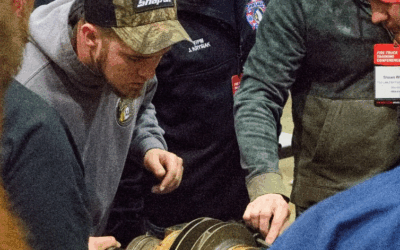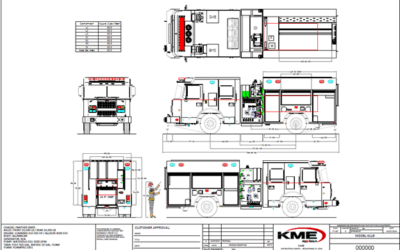Apparatus: The Shops By Michael Huber

In the emergency service industry, we are continually challenged with different problems, all of which we conquer by adapting and overcoming obstacles.
Undeniably, one of the largest issues post pandemic is parts availability. It doesn’t matter if it is parts for apparatus repair or parts to repair the voluminous amount of equipment carried on our rigs.
Parts shortages have impacted all fleets for the past three years. During the pandemic, all parts were in short supply, including gas and diesel. Manufacturers were using parts from stock to build new units, which had a significant impact on replacement parts.
Compounding the issue is the long lead times on obtaining new units. Some manufacturers are quoting 45 to 50 months for new deliveries. This means we must keep our older units running and ready to respond. For that to happen effectively, repair facilities need parts.
As everyone realizes, maintenance costs have increased dramatically because of high demand in addition to parts and staff shortages. Some industry experts estimate that costs have increased 20% to 30% in the past few years. This has an overall effect on the number of parts that repair facilities can stock.
REDUCING PARTS SHORTAGE IMPACT
There are various ways to reduce the impact the parts shortage has on your shop.
- Customize your strategy: Collect data of hours and miles driven to predict preventive maintenance. By using data, you can predict when tires, brakes, and other wear items will need to be replaced. Parts can be on site and ready to put on, decreasing the downtime. Use data to your advantage.
- Perform preventive maintenance at the correct interval: By staying in tune with preventive maintenance, you eliminate the potential for additional wear and tear on parts.
- Don’t ignore small repairs: There will always be small repairs. Address them before they become big problems.
- Know what parts are readily available and what could be a problem: This will allow you time to source the parts from an alternative vendor.
- Adjust the parts levels of items your facility stocks: It may be necessary to adjust your parts levels (amount of inventory used in each period plus a safety stock) so that your stock is increased for normally used parts. This will decrease downtime. Depending on your fleet and your apparatus standardization, stocking tires and brakes should be a great benefit to reduce out-of-service time.
Of great value is tracking the parts on order by vendor. We instituted this a few months ago, and it has helped tremendously—so much so that surrounding jurisdictions have now adopted the policy. For us, at 1600 hours each day, we receive an e-mail with an attached spreadsheet that provides the status of the parts order, estimated delivery time, and shipment tracking.

1 A spreadsheet can provide the status of a parts order, estimated delivery time, and shipment tracking. Tracking parts and using data to perform predictive maintenance ultimately contribute to the overall readiness and effectiveness of your apparatus. (Photo by author.)
Although there are many commercial systems to track orders, they all come with a hefty price tag. All of us in government realize implementing a commercially available software platform takes time and money, both of which are in short supply. Just a simple spreadsheet that is initiated by the vendor when orders are placed is a terrific asset. The vendor is creating the list and disseminating the information. Therefore, for the repair facility, there is minimal effort and maximum gain.
Recently, we had an issue where the vendor advised a part had a delivery time of 90 days. Unfortunately in our business, a unit being down for that length of time is unacceptable. We contacted the corporate CEO, and the part was located. The vendor was notified about the part being sourced, and it showed up on our daily report. We were able to track the part and be prepared for the delivery so the unit could be returned to service in a timely manner. This was confirmation that our new process was working.
Ordering and tracking parts for our apparatus and equipment involve a systematic process to ensure availability and functionality of essential components. Tracking parts and using data to perform predictive maintenance ultimately contribute to the overall readiness and effectiveness of your apparatus.
MICHAEL HUBER is a fire apparatus driver/operator and fire apparatus fleet manager for the Baltimore County (MD) Fire Department.






